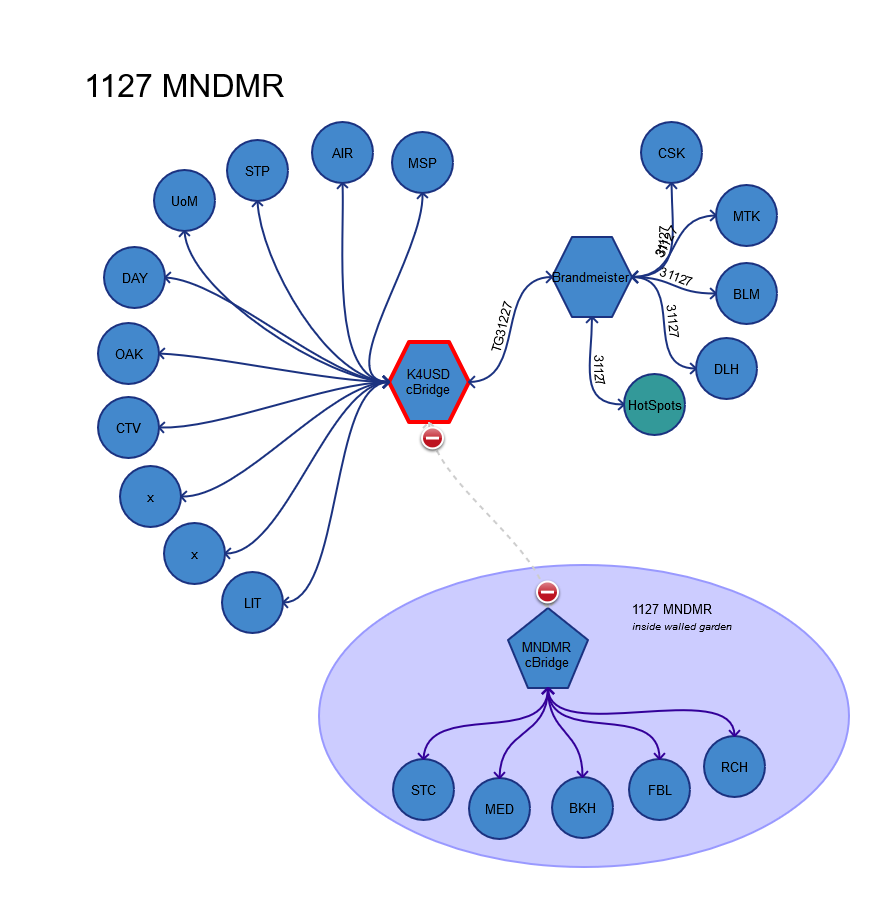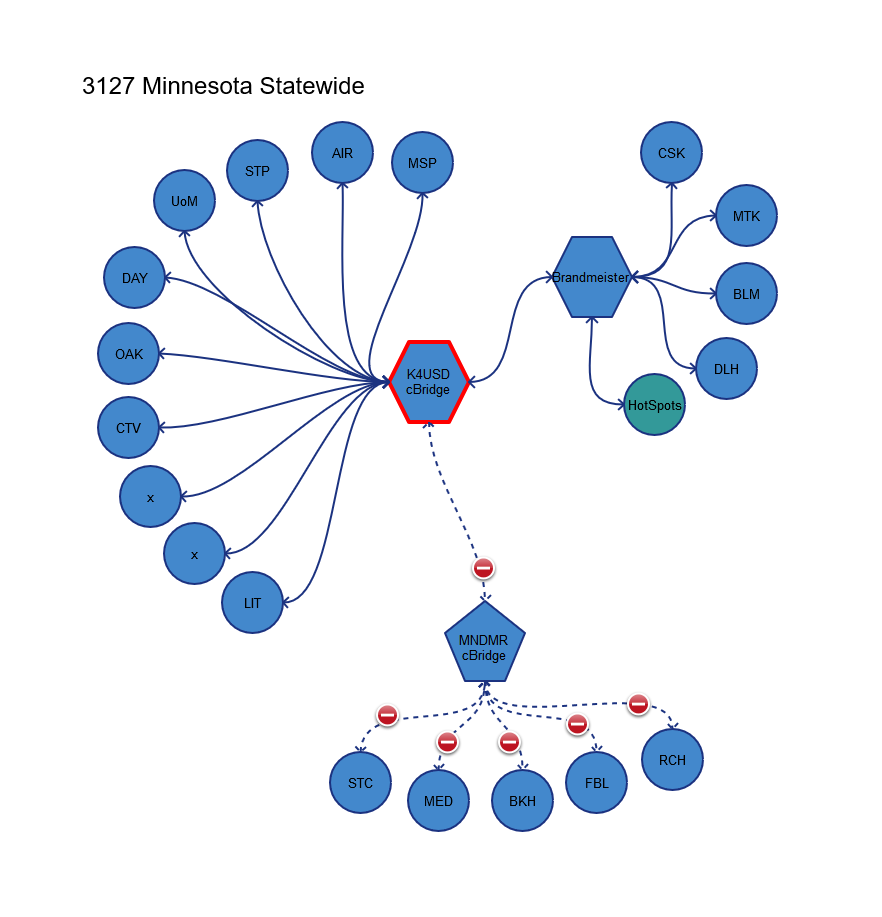I have attempted to graphically depict the state of the MNDMR network as I understand it. I am also including Minnesota Statewide for comparison.
You may notice that the MNDMR connection is still in place between all the original repeaters and it’s still connected with Brandmeister and appears as TG31127 on Brandmeister. Officially, the world of networks sees K4USD as the master system hosting this TG number. In the case of the Nagi/James network, they consider themselves the master. As far as I know, there are no external connections to their network for this Talk Group.

Here’s the statewide talk group.

Generally, all repeaters support all talkgroups on their radio side, but will not forward to a network unless configured to do so. So for example, if you attempt to use Minnesota Statewide on a Nagi/James MNDMR cBridge connected repeater, it does appear to work locally, but isn’t going out any other repeaters.
Hi all,
I’m an RF guy and not a networking guy, so please bear with my ignorance. 😉
In the maps above, what is the significance of the red border around the K4USD cBridge symbol? Also, what do the “-” signs and dashed lines represent?
Also, looking at the two maps, I see little functional difference between TG1127 and TG3127 as far as the TC metro area is concerned. Is there more of a difference between the two looking from the “outside” (i.e. a user in a different state)?
How is the link (if that is the right word) made between Brandmeister and the K4USD cBridge made? Put another way, who is responsible for getting that path in place? An individual, a group of repeater owners?
Really interesting stuff this DMR…..I’m getting a kick out of learning something new…..Just when I thought I knew it all. 🙂 😉
Tnx!
Bob WB0POQ
This document is becoming dated. The red box around the K4USD cBridge was to represent what system was an owner, master or originator of the talk-group. This is done to prevent routing loops. The rule of thumb is to only allow links to the “master/originator/owner” whatever you want to call it. The – or minus sign is a universal or international symbol that means “no exit”. The point was that the operator of that cBridge was not allowing this data to exit here. But in the last 2 weeks the cBridge has been sold and links are being reestablished.